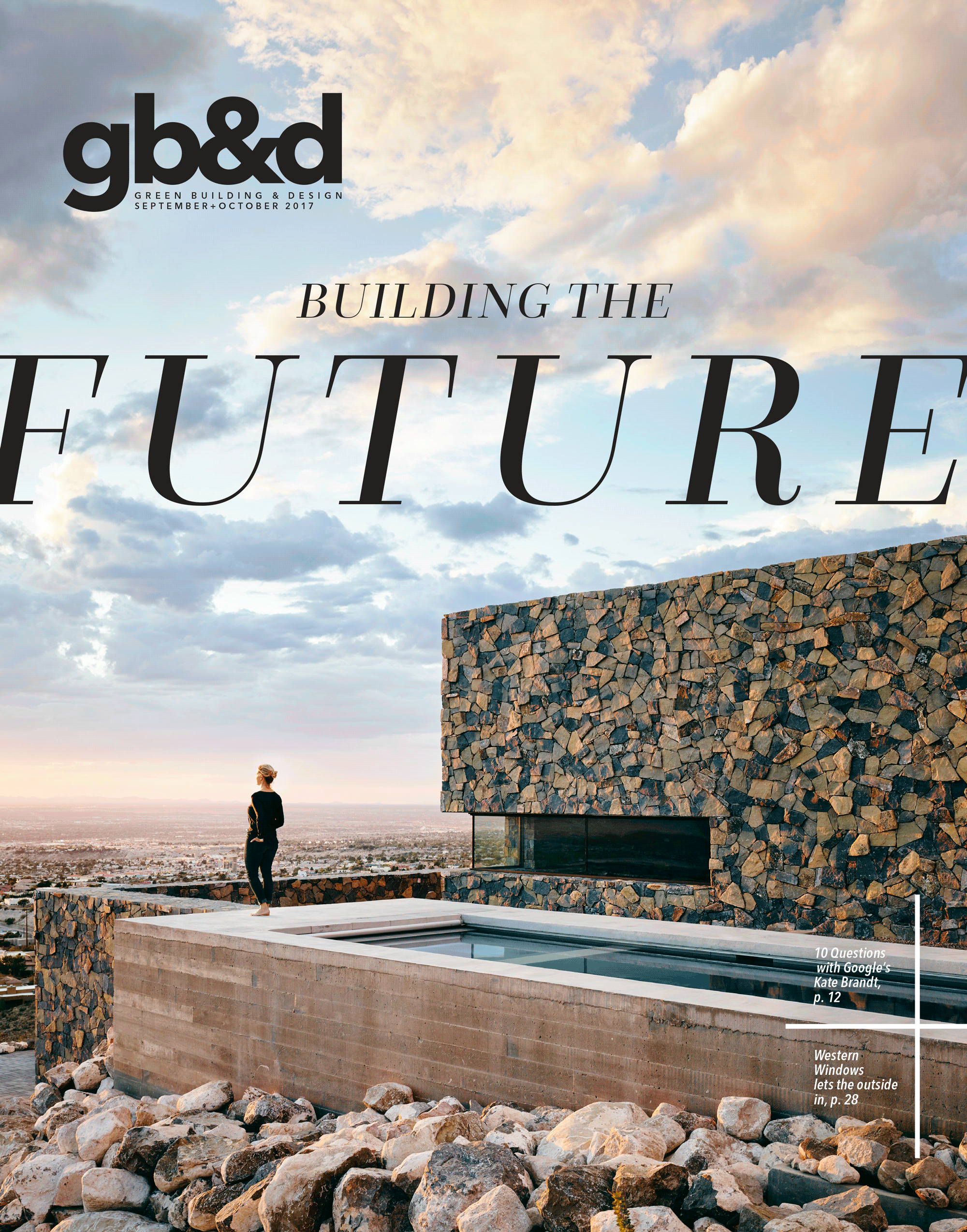 Download a PDF of this story.
Download a PDF of this story.
To learn more, visit Lacey Glass
The experts at Lacey Glass say it’s no surprise that a brightly lit space is a desirable one—whether it’s for functional reasons or physical ones. Studies by the Heschong Mahone Group and the California Sustainability Task Force showed that students improved test scores and hospital patients healed up to 15% faster when exposed to natural daylight.
Lacey Glass has been brightening up the Pacific Northwest for nearly 40 years through strategic daylighting (the intentional and controlled introduction of light into a building) that challenges conventional notions of how to get light into everyday spaces. They also offer more sloped glazing and translucent glazing systems than anyone in the Pacific Northwest region.
Phil Zeutenhorst, president of Lacey Glass, wants to change the way people light buildings for comfort, visibility, and sustainability—starting with getting rid of some of those windows. “[People like to say] ‘just open up the side of building and let in all the light you can.’ But this adds hotspots and glare,” he says. Not only that, the beam of bright light can amp up visual contrast, making the rest of the interior look darker.
“Any light that casts a shadow isn’t good for daylighting because you end up working in your own shadow. Diffusing daylight with translucency also cools it, which is better for a building’s energy costs (although there is a place for transparent glass, too). The more you spread natural daylight around, the better.” When you have a bright beam of sunlight, it warms the surrounding area, so you are essentially creating hot spots and then wasting money to mechanically cool the space.
These are just a few of the many inspiring and unconventional ways Lacey Glass brings light into its projects.
FROM OUR SEPTEMBER+OCTOBER 2017 ISSUE
The preferred publication of leading green professionals.
1. Flexibility & Functionality
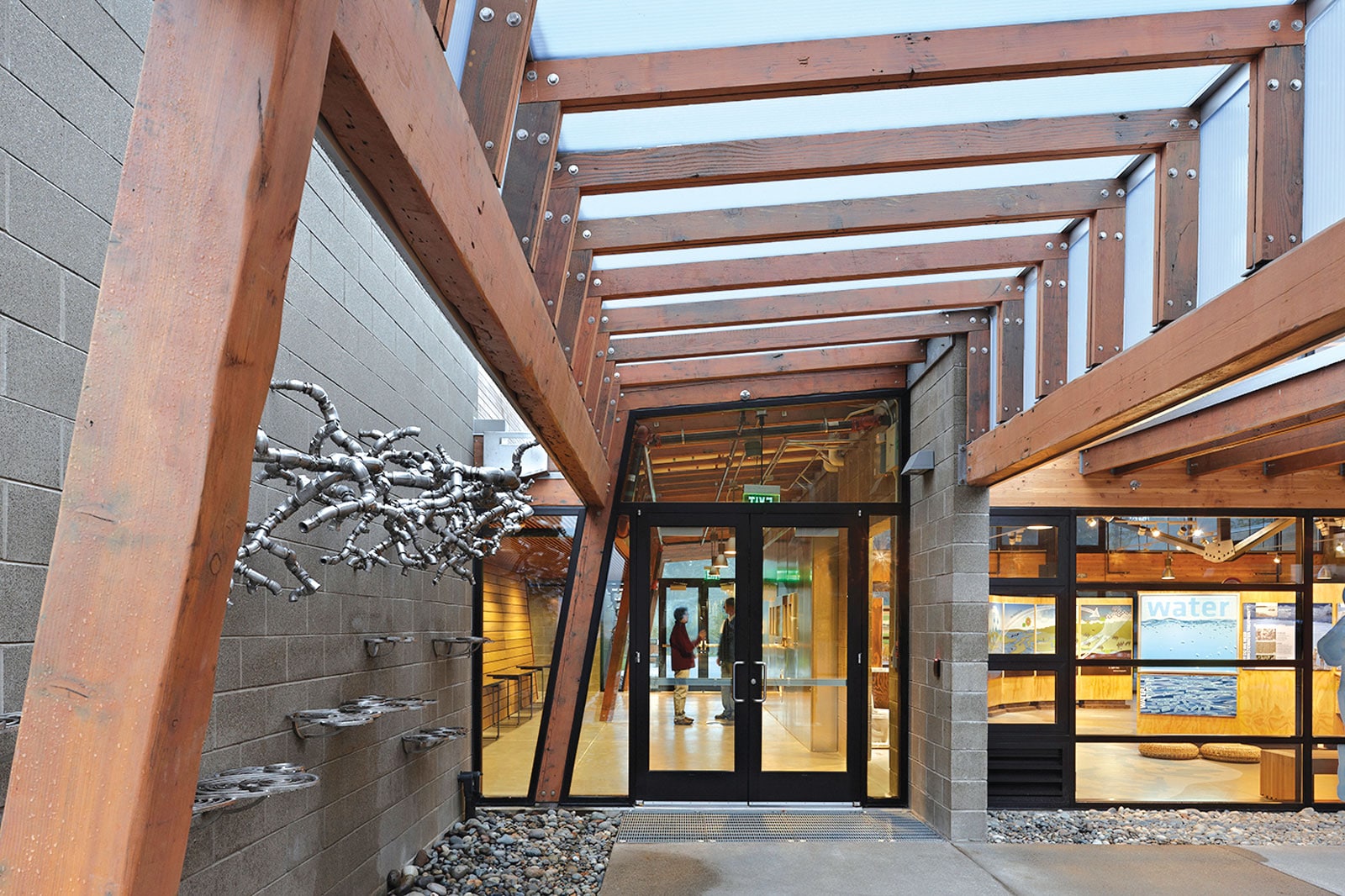
[Photo: Courtesy of Lacey Glass]
Although “stunning” and “sewage” aren’t often in the same sentence, the Brightwater Wastewater Treatment Plant encompasses both, hosting weddings and tours as well as serving an all too important purpose. The plant keeps the visitors’ center and covered walkways bright and airy with warm wooden beams and plenty of natural light, thanks to a series of translucent skylights from Lacey Glass. “In the Pacific Northwest, you need to cover everything because it rains all the time,” Zeutenhorst says. “We wanted to bring the outdoors indoors.” Large removable skylights make it easy to access the plant’s equipment and water pumps, while keeping the area well lit and protecting maintenance personnel and equipment from the elements.
2. Diffusing Light Creatively

[Photo: Courtesy of Lacey Glass]
ClearShade, a new Panelite product Lacey Glass is using, supports LG’s daylighting philosophy with advanced technology. “It diffuses light, but you can still see through it, which is pretty unconventional,” Zeutenhorst says. “It reduces solar heat gain by cutting down light transmission into the building. Once light scatters, it doesn’t create heat as much.” ClearShade has been used on projects like the StoryCorps building in Manhattan, where its excellent sound attenuation properties help the recording studio collect and archive American oral histories.
3. Controlled Daylighting
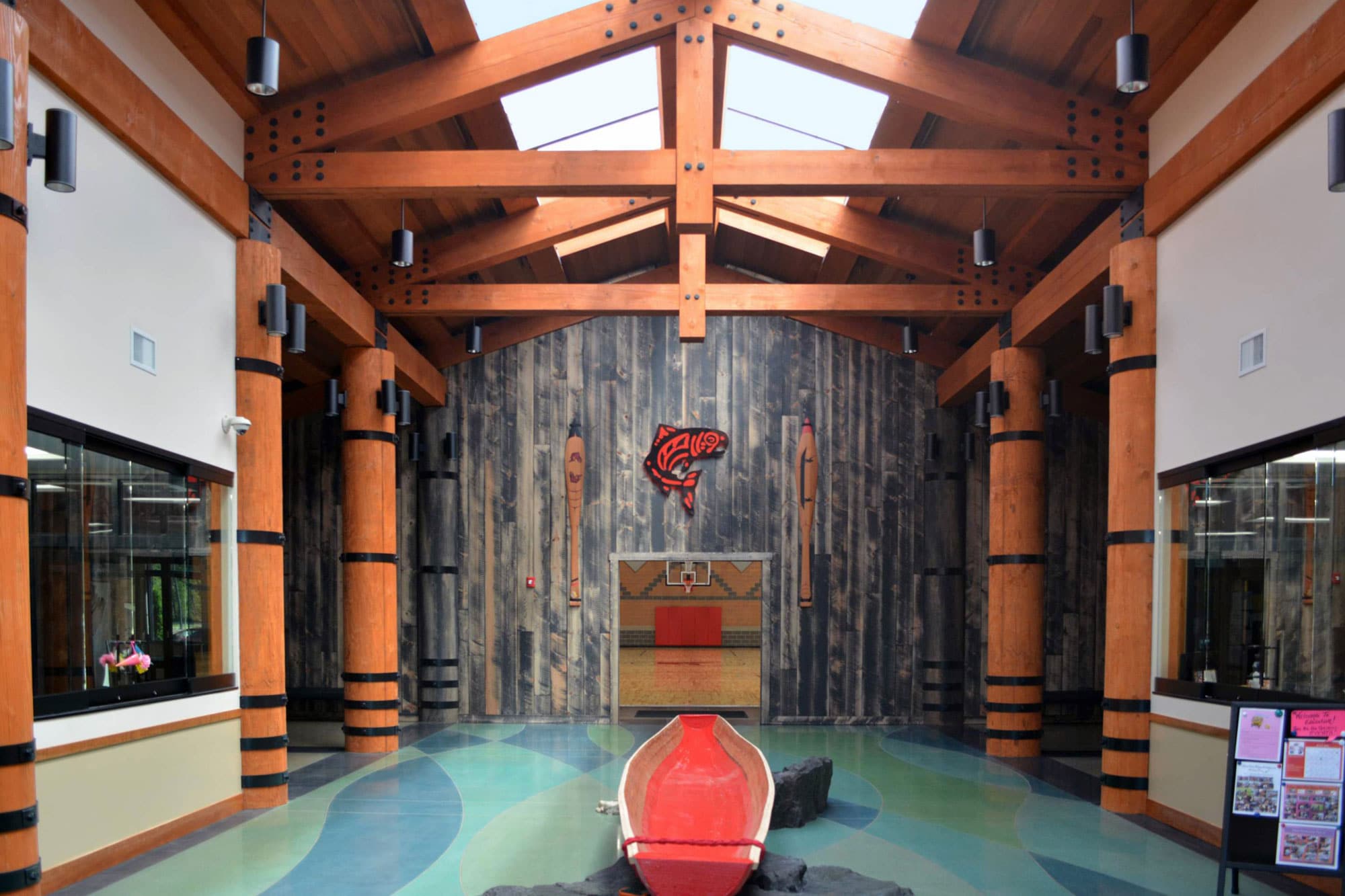
[Photo: Courtesy of Lacey Glass]
The focus was on adequately highlighting displays without overheating them at the Stillaguamish Indian Cultural Center. Considering the environment lacked frequent direct sunlight, the challenge was to make sure the center received enough light when conditions were cloudy without damaging displays if a rogue scorcher or constant hot spots were to hit. “We had to design the lighting system around the worst case scenario, which is two weeks of 90-degree weather in August,” Zeutenhorst says. “If you design natural daylighting for December and January lighting conditions, you have a giant mechanical system and a big electric bill.” The solution? Mechanical louvers that respond to a set light level, almost like a thermostat. At Stillaguamish, the louvers adjust depending on external lighting sources, saving energy and maintaining a consistent level of light year-round.
4. Reflected Light
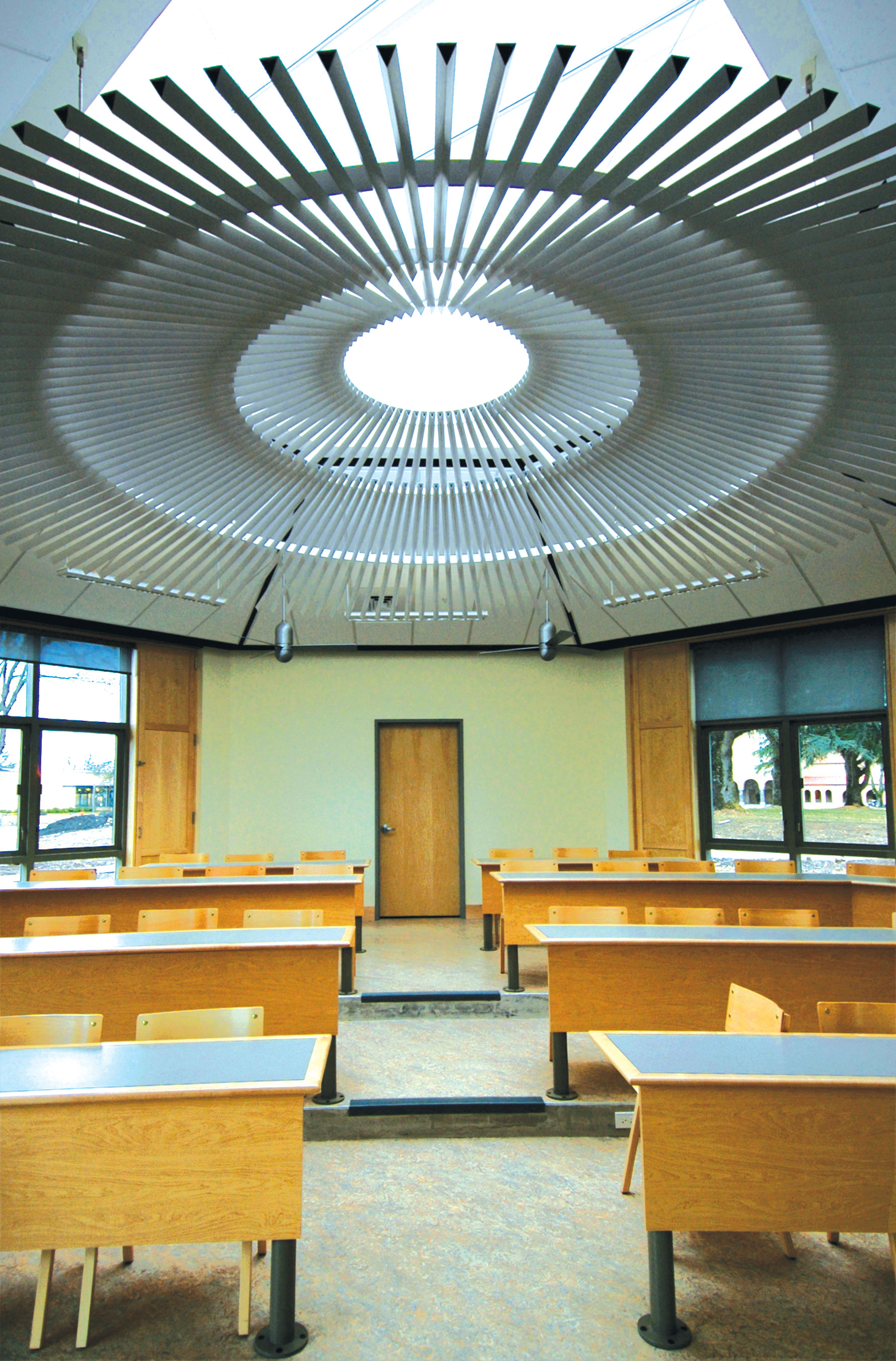
[Photo: Courtesy of Lacey Glass]
At the Mount Angel Abbey in Mount Angel, Oregon, adjustable louvers fine-tune incoming light from a skylight, enabling the classroom to lean on natural sunlight 95% of the time. Electrical lighting is a mere backup. The team achieved this by collaborating with the University of Oregon, who tested out models of a custom-designed skylight with reflectors and louvers on a virtual sky before deploying it in the classroom. “They open the louvers when they need light,” says Kent Duffy, principal at SRG Partnership. “The trick is the radial elements—triangular shaped aluminum extrusions—that are spaced more densely in the middle and less so toward the edges. You don’t have hot spots or heat gain.” The aluminum does an incredible job of reflecting incoming light around the space. The louvers are parallel half cylinders that rotate and adjust to the available amount of incoming light. “We were shooting for a daylight between 20 and 45 foot candles (fc),” Duffy says. “Outside, in the clear blue day, it was 9,000 fc. We hit exactly 45 fc on a desktop.
5. Switchable Glass

[Photo: Courtesy of Lacey Glass]
A custom-made cantilever machine made by Lacey Glass was part of the innovation used at Delta Airlines Club at Seattle-Tacoma International Airport. The lounge has a stunning view of the Olympic Mountains, but it faces west, which posed a problem. “The glare and the heat gain would have been tremendous,” Zeutenhorst says. Enter Lacey Glass’s brilliant solution—electrochromic coatings, or a glazing system that responds to light and heat via sensors that increase or decrease window tints as needed. The glazing switches between the clear state and the tinted state by sending electrical voltages between tiny layers of metal oxides. That means that when the sun hits with full force, waiting passengers can still enjoy gazing out at the mountains. Electrochromic coatings are a big deal in the industry now, that’s for sure, as the outlook for electrochromic glass is growing dramatically, Zeutenhorst says.
6. Cut Glare
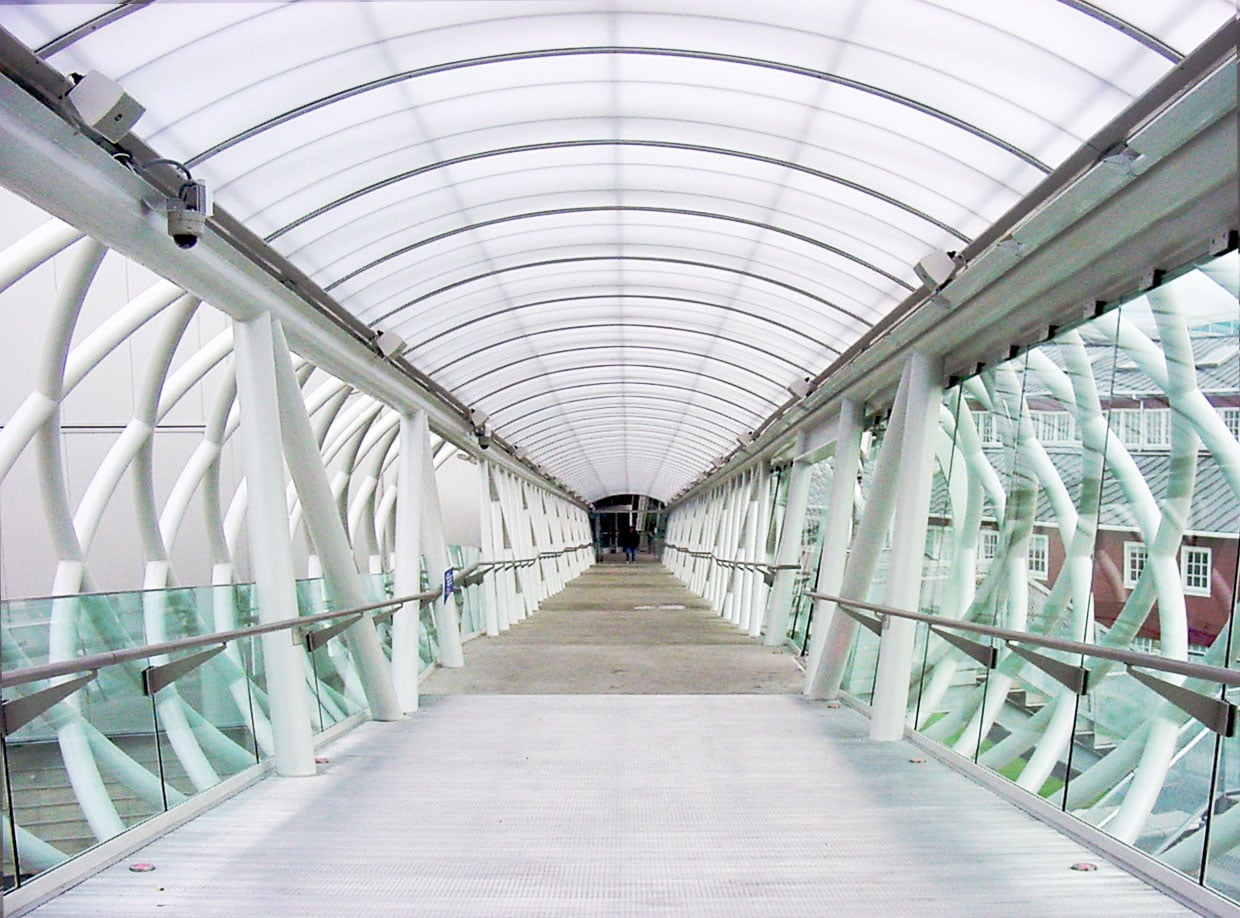
[Photo: Courtesy of Lacey Glass]
The futuristic T. Evans Wyckoff Memorial Bridge at the Museum of Flight in Seattle shuttles pedestrians over a busy thoroughfare. The 200-foot pedestrian bridge was a challenge to completely enclose with an affordable material because it’s a curving, tubular structure, explains Duffy, who worked on the bridge. With railings on both sides to cut blustering winds, one side is open and one is glazed full height, letting light pour in from all angles. “When you walk across the bridge, you feel like you’re in this very open, airy passage. Having light fill that whole space supports that open feeling,” Duffy says. A translucent lid diffuses light enough to keep the baking sun at bay, while also extinguishing glare for pedestrians.
7. Polycarbonate Cladding
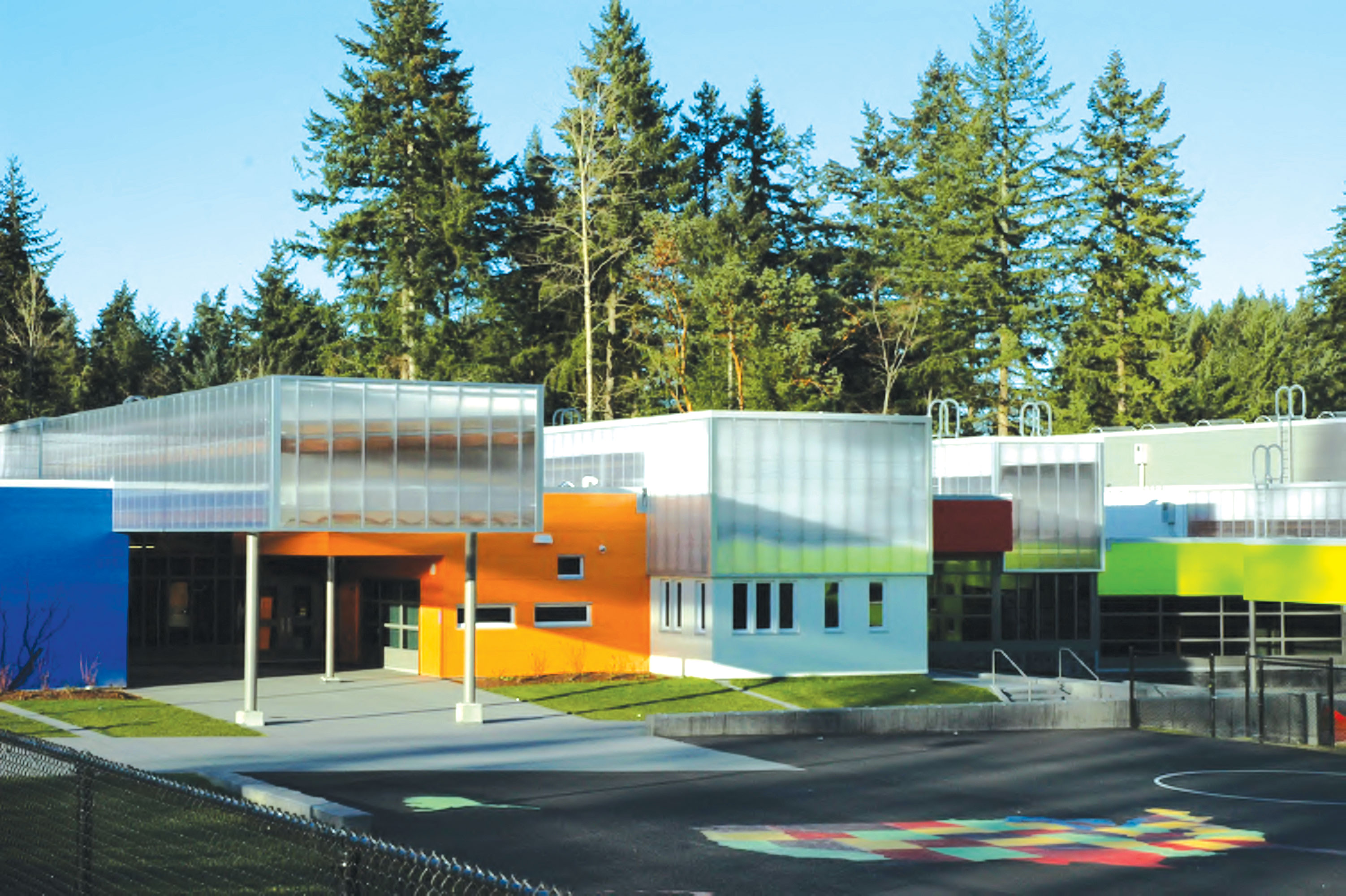
[Photo: Courtesy of Lacey Glass]
Open classrooms are the perfect playground for active minds, but in the case of the Federal Way School District in Seattle, they presented a daylighting riddle. In the schools’ open, warehouse-like spaces, skylights were proposed since the walls would largely be opaque partitions. But skylights were also prohibitively expensive. “Having a roof with a ton of holes in it is a pain for the contractor,” explains Noah Greenberg, principal at DLR Group, who worked on the schools. So Greenberg and his team thought up a solution that preserved the flexibility of the classrooms while filling them with light: using polycarbonate as a cladding material. The hearty, economical material was the perfect choice, as it diffuses light gently into the wide, open classrooms, providing even light from above.
8. Use Clear Glass
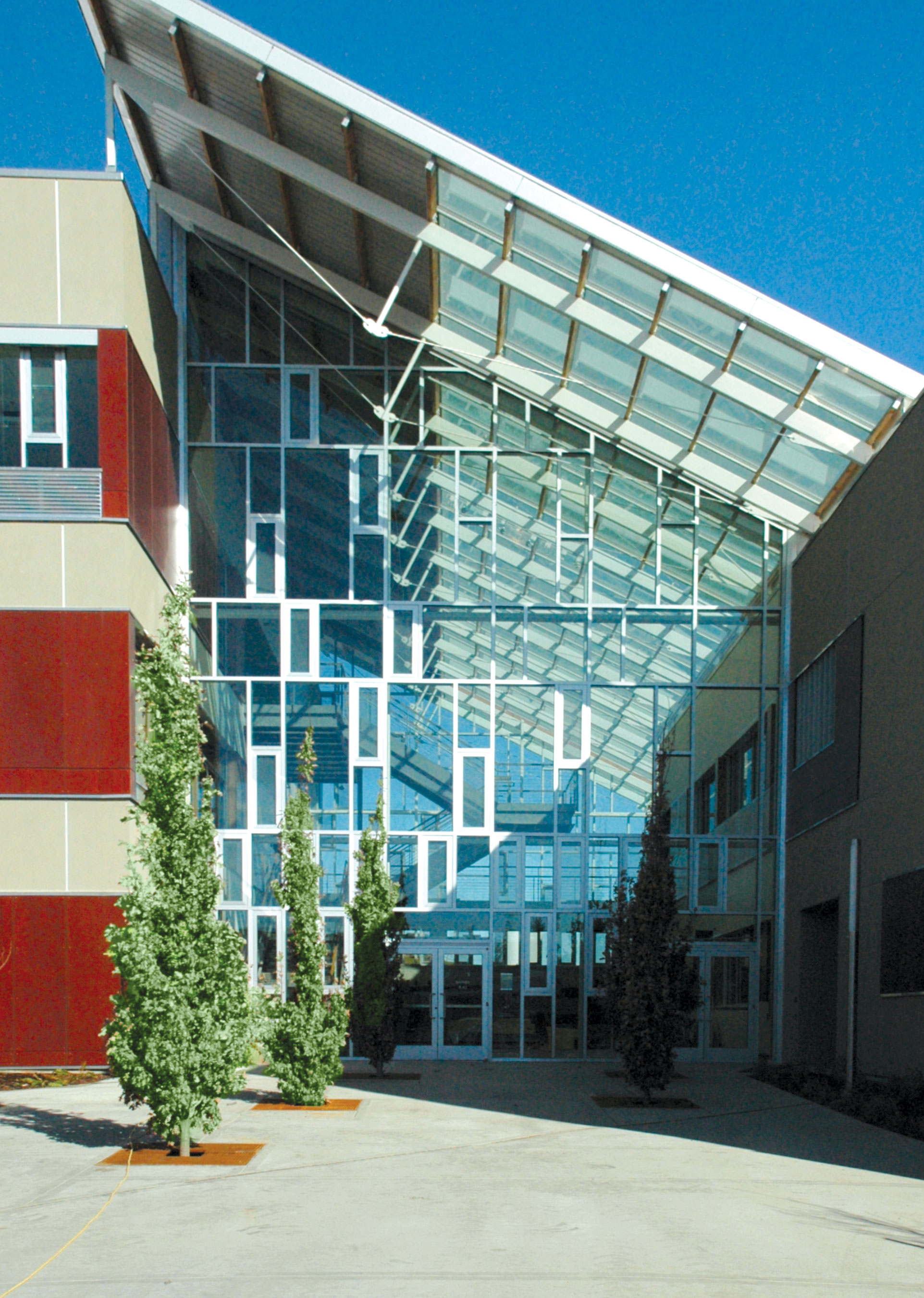
[Photo: Courtesy of Lacey Glass]
The atriums between the Rainier Buildings at Pierce College use clear glass to help maintain an outdoor feel, or at least a connection to it. “Translucent lighting solutions—which diffuse light and are not completely transparent—are actually best for work spaces,” Zeutenhorst says. “You’re trying to give people who are cooped up indoors some healthy (and even) daylight.” Clear glass, which makes up the wall of windows on the atriums, works the opposite way, sharpening high-contrast shadows and unobstructed views of grass, trees, and sky to inspire a more relaxed feel. Where a deep shadow might make computer work challenging, the natural play of light as the sun goes down is more than welcome in a bustling atrium.
Learn more about Lacey Glass and see related content about daylighting.

